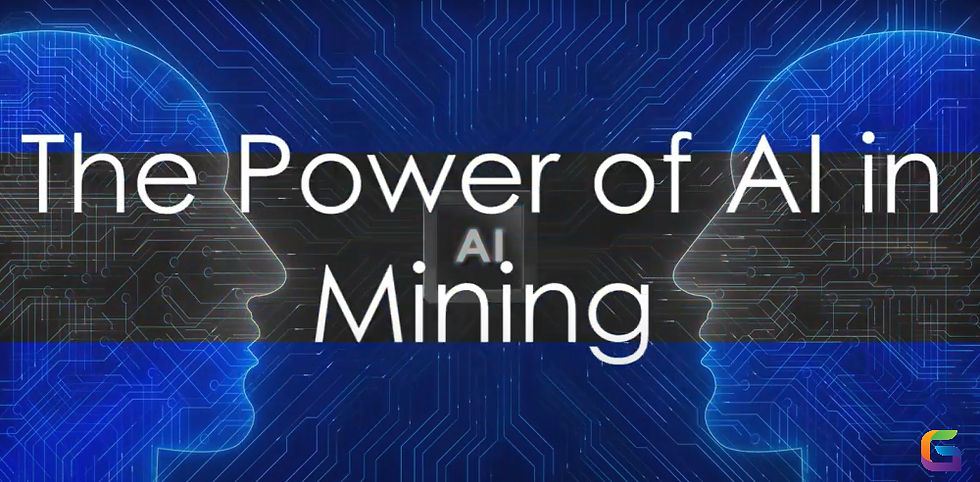Geospatial AI: How GeoAI Is Transforming Spatial Analytics
- GeoWGS84

- Jun 20
- 3 min read
Updated: Jun 23
In an era of rapidly increasing data, Geospatial Artificial Intelligence (GeoAI) has become a powerful tool in spatial analytics. It combines the strengths of Geographic Information Systems (GIS) with advanced AI techniques, such as machine learning (ML), deep learning (DL), and computer vision. GeoAI enables the scalable, automated, and high-resolution interpretation of spatial data, supporting a wide range of applications in urban planning, climate modelling, smart agriculture, disaster response, logistics, and more.
What Is GeoAI?
The use of AI algorithms with spatial data to find patterns, make predictions, and automate decision-making is known as geoAI. GeoAI utilizes data-driven models that can learn from historical and current spatial information, such as satellite imaging, LiDAR point clouds, sensor networks, and GPS trajectories, in contrast to standard GIS, which primarily relies on rule-based logic and manual interpretation.

Key Components of GeoAI in Spatial Analytics
1. Fusion of Spatial Data
Several geospatial data streams are combined by geoAI systems:
Image data from remote sensing (Sentinel, Landsat, PlanetScope)
Geotagged data collected by the public (OpenStreetMap, social media)
Sensor feeds (drones, IoT devices)
3D information (photogrammetry, LiDAR)
Models can extract more detailed spatial information and take spatiotemporal dynamics into account thanks to data fusion.
2. Geospatial Imagery and Deep Learning
Transformer-based vision models (such as Vision Transformers and SAM) and Deep Convolutional Neural Networks (CNNs) are frequently employed for:
Classification of land cover
Extraction of building footprints
Change identification
Identifying objects in aerial or satellite photos
These models can be operationalized in spatial contexts with the aid of libraries such as TorchGeo, Solaris, and DeepForest.
3. Machine Learning with Spatial Awareness
Conventional machine learning models are frequently spatially naïve. To improve them, GeoAI uses:
Metrics of spatial autocorrelation, such as Moran's I
GWR stands for Geographically Weighted Regression.
Layers of spatial embedding (taught using GeoGraphs or Graph Neural Networks)
This results in models that take spatial dependencies and geographic context into account.
4. Graphs of Geospatial Knowledge
GeoAI is capable of reasoning, inference, and semantic search by connecting spatial items (such as roads, buildings, and plants) into semantically enhanced knowledge networks. These graphs support robust location-based recommendation systems and urban intelligence applications.
Applications of GeoAI in Spatial Analytics
Urban Infrastructure Monitoring
Automatic detection of new constructions and illegal encroachments
Monitoring transportation networks using spatiotemporal traffic data
Smart city planning with mobility, pollution, and population layers
Agricultural Intelligence
Crop classification and yield prediction using hyperspectral and multispectral imagery
Pest/disease detection using UAV imagery and deep learning
Soil moisture and irrigation optimization via AI-driven IoT analytics
Environmental and Climate Analytics
Forest degradation and wildfire risk modelling
Climate zone mapping using AI-clustered meteorological data
Coastal erosion and sea-level rise monitoring with historical image time series
Disaster Management
Damage assessment post-disaster via semantic segmentation on satellite imagery
Flood prediction models incorporating hydrological and spatial data
Real-time evacuation route optimization using AI-powered routing engines
Technical Stack and Tools for GeoAI
Category | Tools/Frameworks |
Spatial ML/DL | PyTorch, TensorFlow, Scikit-learn, XGBoost |
Geospatial Processing | GDAL, Rasterio, Fiona, GeoPandas |
DL on Geospatial Data | TorchGeo, Solaris, SegFormer, Detectron2 |
Cloud & APIs | Google Earth Engine, AWS SageMaker, Esri ArcGIS API for Python |
Visualization | |
Big Spatial Data | Apache Sedona, GeoMesa, PostGIS |
Online GeoAI Platform |
GeoAI is a crucial advancement in spatial analytics, not merely a trendy term. Organizations may obtain deep geographic insights with previously unheard-of speed and accuracy by utilizing cloud scalability, spatial data processing frameworks, and AI-driven models.
Understanding GeoAI is becoming essential for influencing the geospatial future, regardless of your background—data scientist, urban planner, or environmental researcher.
For more information or any questions regarding geospatial AI, please don't hesitate to contact us at
Email: info@geowgs84.com
USA (HQ): (720) 702–4849
(A GeoWGS84 Corp Company)




Comments